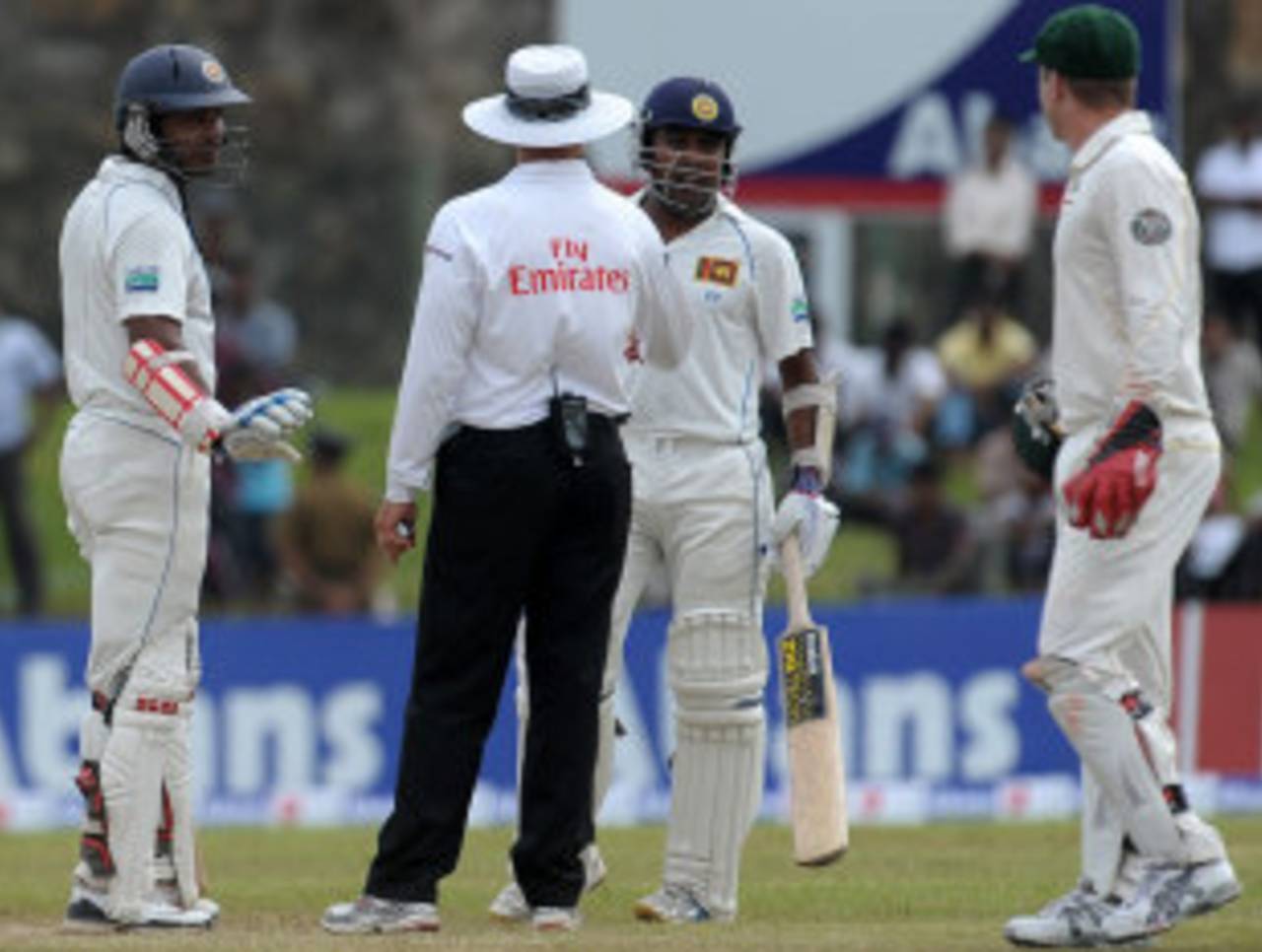Problems with the pitch-mat?
Plays of the Day from the third day of the Galle Test between Sri Lanka and Australia

Brad Haddin and Mahela Jayawardene argue about the issue of players running on the pitch • AFP
Heavy overnight rain and lighter stuff on the third morning meant that play did not start until 12.10 pm. Before then the groundstaff were delayed by a handful of damp spots on the pitch, where water had seeped through the cover. They were evened out by the rather novel use of a hair-dryer, which was applied in small circular motions to the patches of moisture with the help of one of those industrial length power cords that allow the toss and pitch report to be televised. The irony of damp spots on the driest Test pitch many of the Australian players had ever seen cannot have been lost on Michael Clarke and Tim Nielsen as they watched the hair-dryer in action.
By the time Sri Lanka dismissed Australia for 210, they were facing a target of 379, the biggest chase in their history if it was to be achieved. The best remains the thrilling pursuit of 352 against South Africa at the P Sara Oval in 2006, when Mahela Jayawardene's 123 anchored the chase and Lasith Malinga scrambled the winning run after Muttiah Muralitharan had been bowled with two needed. The outlook for the Sri Lankans in Galle was bleaker, given that the highest fourth-innings score here is 210 for 9 by England in 2003, while the highest successful fourth-innings chase is a mere 96, albeit with 10 wickets in hand, by Sri Lanka against India in 2010.
The first two balls of Sri Lanka's innings demonstrated the narrow margins by which innings and careers can be decided, and why suspicions of imprecision continue to linger around ball-tracking technology. Ryan Harris' first ball to Tharanga Paranavitana was straight, short of a length and kept low, thudding into his pads in front of the stumps. The Hawk-Eye pitch mat showed the ball had landed millimetres outside leg stump, though Paranavitana declined to review the decision. Next ball, Kumar Sangakkara was struck in line by one that swung back at him, and after the appeal was declined the Australians referred it. Initial replays suggested the ball had pitched in line with the stumps, as it generally has to if it swings back to threaten a left-hander's pads. However the Hawk-Eye mat subsequently showed the ball landing on the same line as the previous delivery. Sangakkara survived, amid widespread mutterings about whether two wrongs can ever make a right.
When Nathan Lyon and Trent Copeland were batting together at the end of Australia's second innings, discussions broke out over the question of whether or not Lyon had scuffed the pitch with his spikes. Mahela Jayawardene certainly seemed to think so, and he pushed on with his line of inquiry when Copeland was bowling in the late afternoon. Australia's combative wicketkeeper, Brad Haddin, also became involved, before Ricky Ponting added his opinion during a conversation with the umpires. Given the margin between the teams it all felt a little empty, but the state of the pitch made the issue of its preservation a stickier topic than usual.
Daniel Brettig is an assistant editor at ESPNcricinfo